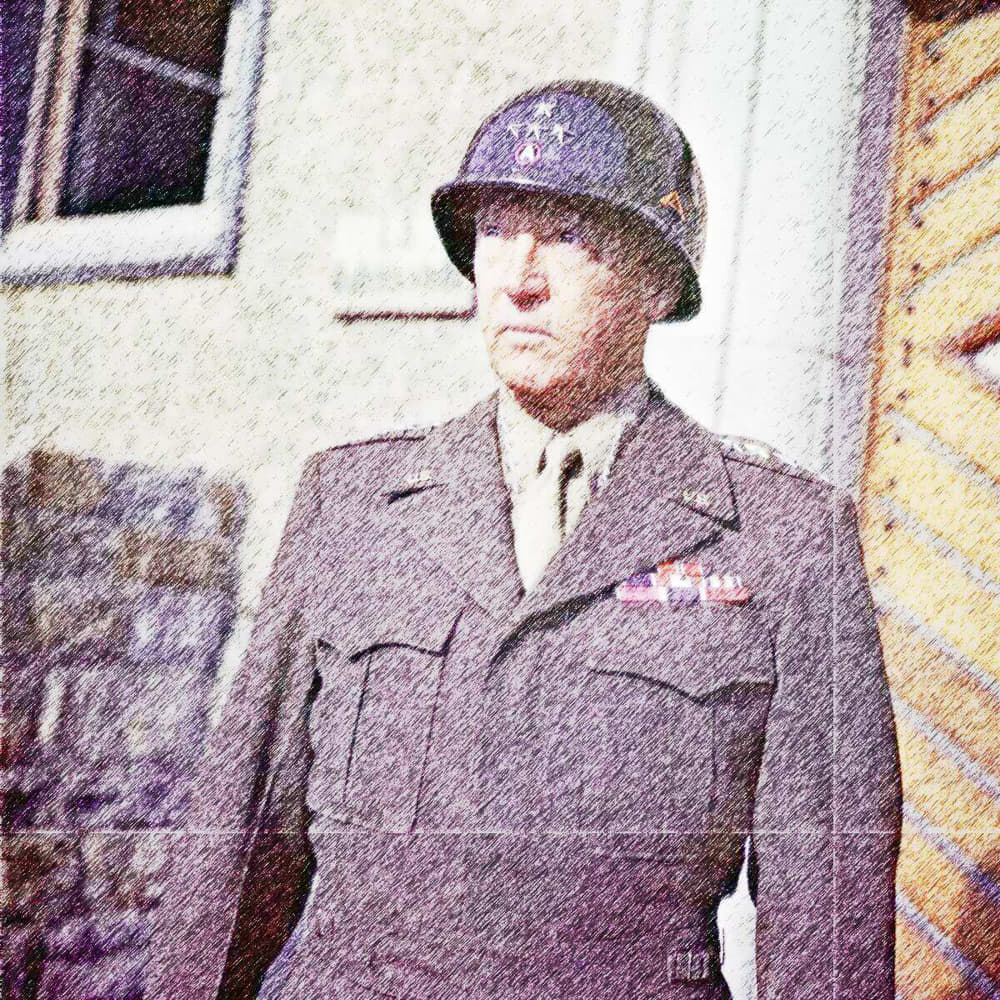George Smith Patton is considered to be America’s greatest military officer of World War II. He had already distinguished himself in World War I as commander of the newly formed U.S. Armored Corps. In World War II he became famous for coordinating corps movements in Africa, Sicily and in the Central European theater of operations. He was later relieved of duty for slapping a convalescing American soldier in a hospital, who was suffering from a nervous breakdown. Patton called him a coward.
But at the end of the war, he resumed command of the Third Army in France, where he was able to maneuver in time to respond to a German counteroffensive in the Ardennes.
His battle group went on to defeat German troops, and Patton’s plan was to take Prague and Berlin before the Russians and occupy Czechoslovakia and Germany. He was nicknamed “Blood and Guts” for a reason. But he received the order to stop the offensive, since it had been agreed in Yalta that the Soviet Union was to conquer the center of Europe. In addition, General-in-Chief Eisenhower gave the British Montgomery the gasoline for Patton’s tanks, so that the latter would not advance so fast.
From then on, Patton became a loudmouth general. He denounced the collusion between the U.S. government and the Soviet Union to win the war, and singled out the Russians as irreconcilable enemies. When the war ended, Patton increased his criticism of the Soviet occupation of half of Europe, which would not have been achieved without U.S. support.
In December 1945 Patton suffered a freak accident in Manheim. His car ran into a truck in the middle of the road, an accident in which the occupants of the vehicle were barely scratched. However, a sniper put a bullet in the general’s neck and he had to be hospitalized.
Patton began to recover from his wounds but, surprisingly, died in the hospital.
Historian Robert Wilcox has reconstructed these events, as he was able to talk to a person who participated in the attack against Patton. His name, Douglas Bazata. At that time, this man worked for the OSS (Office of Strategic Services, predecessor of the CIA) and received from his boss, General “Wild Bill” Donovan, the order to execute Patton.
It was Bazata who managed to get a truck on the road and himself fired a low-velocity projectile that pierced Patton’s throat. Wilcox spoke with Bazata shortly before the spy died in 1999. He confessed to that, once in the hospital, the American secret services turned a blind eye to the Soviet spies poisoning Patton.
All this Bazata told Wilcox. Driven by his remorse, as revealed by the British newspaper The Sunday Telegraph, Bazata “had an inner war with himself because of the crime he had committed.” Wilcox states, “He confessed to me that he had caused the accident and that Donovan had ordered it.”
According to Wilcox, Donovan told Bazata the following: “We are presented with a dramatic situation with this patriot [Patton]. He is out of control and we must save him from himself, and also because he can ruin everything the Allies have done.”
Bazata was decorated with four purple hearts during the war. He was an exceptional paratrooper, having jumped over France before D-Day to help form the Resistance.
After the war, Bazata became an artist and was a close friend of Salvador Dalí, who used his features to paint a picture of Don Quixote.
Wilcox also interviewed another witness, Stephen Skubik, a U.S. Army counterintelligence officer. Skubik tipped off Donovan that Stalin had Patton on the list of people to assassinate. Donovan sent Skubik back to the United States.
Wilcox uncovers more in his book. Patton’s Cadillac, which is on display at the Fort Knox Museum, is not the same one that suffered the bombing. With the help of an expert, Wilcox claims he has proof that the real Cadillac has been replaced with another.
Patricia Lamsa writes for El Manifesto, through whose kind courtesy this article appears.
